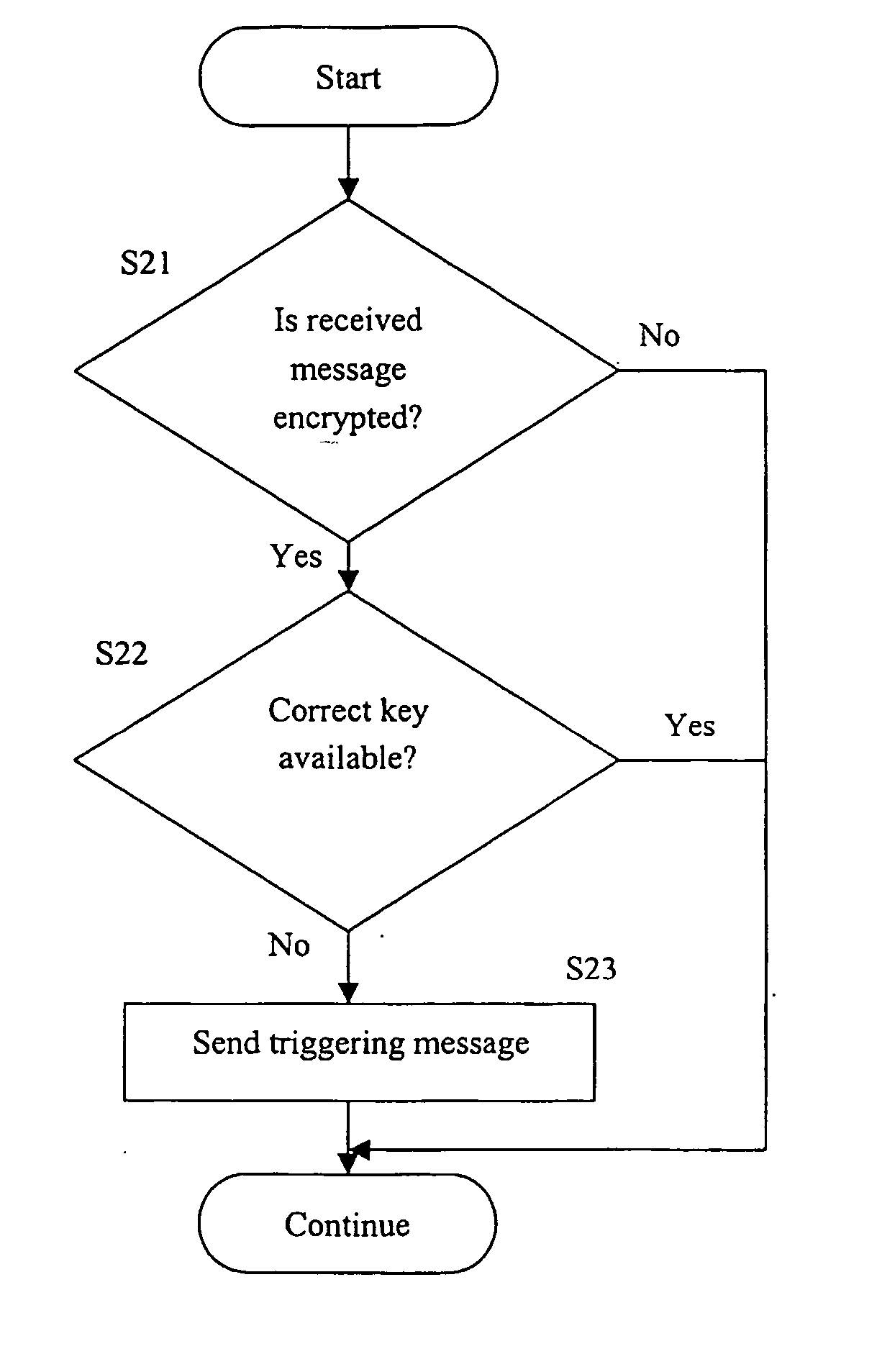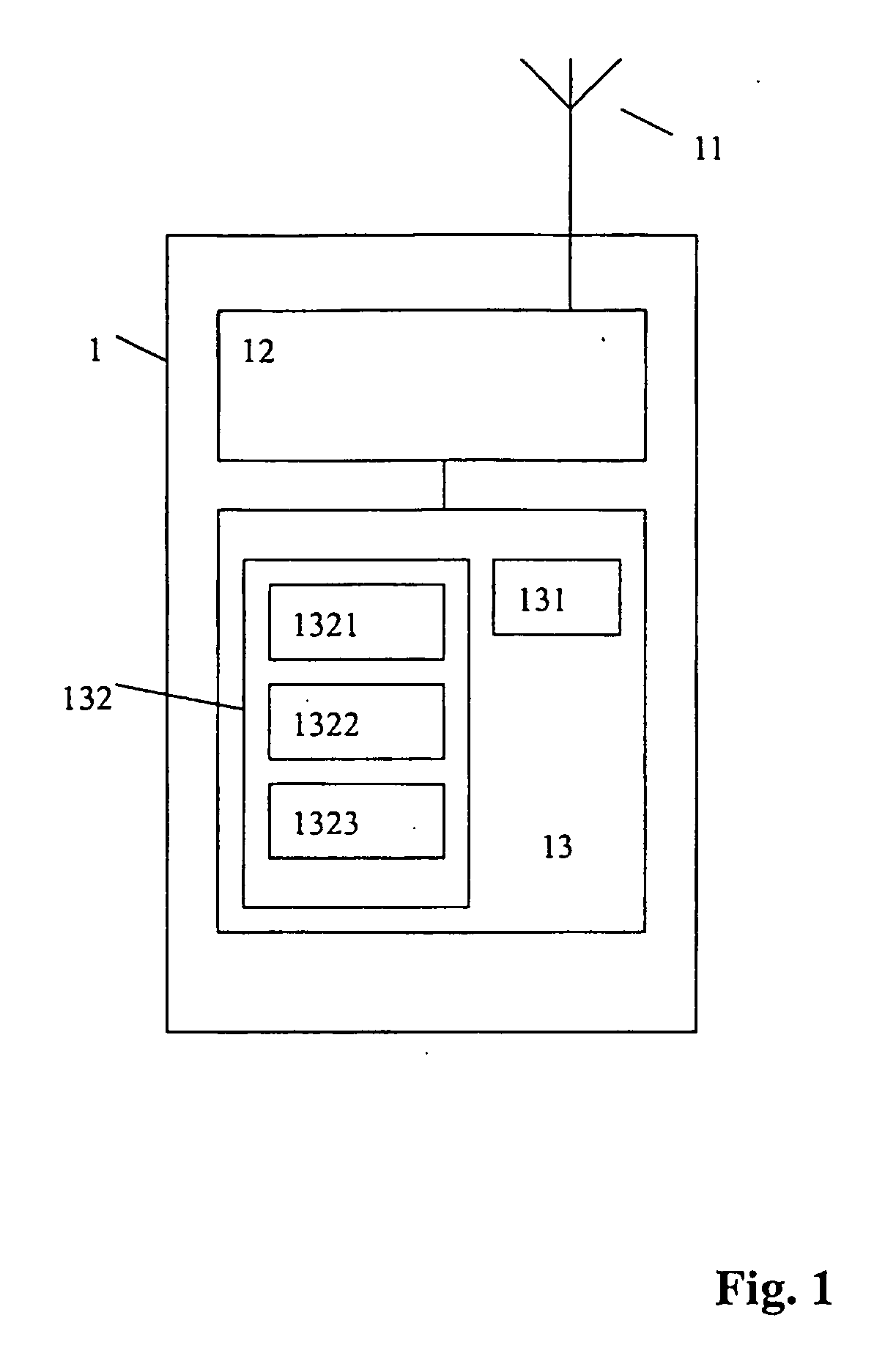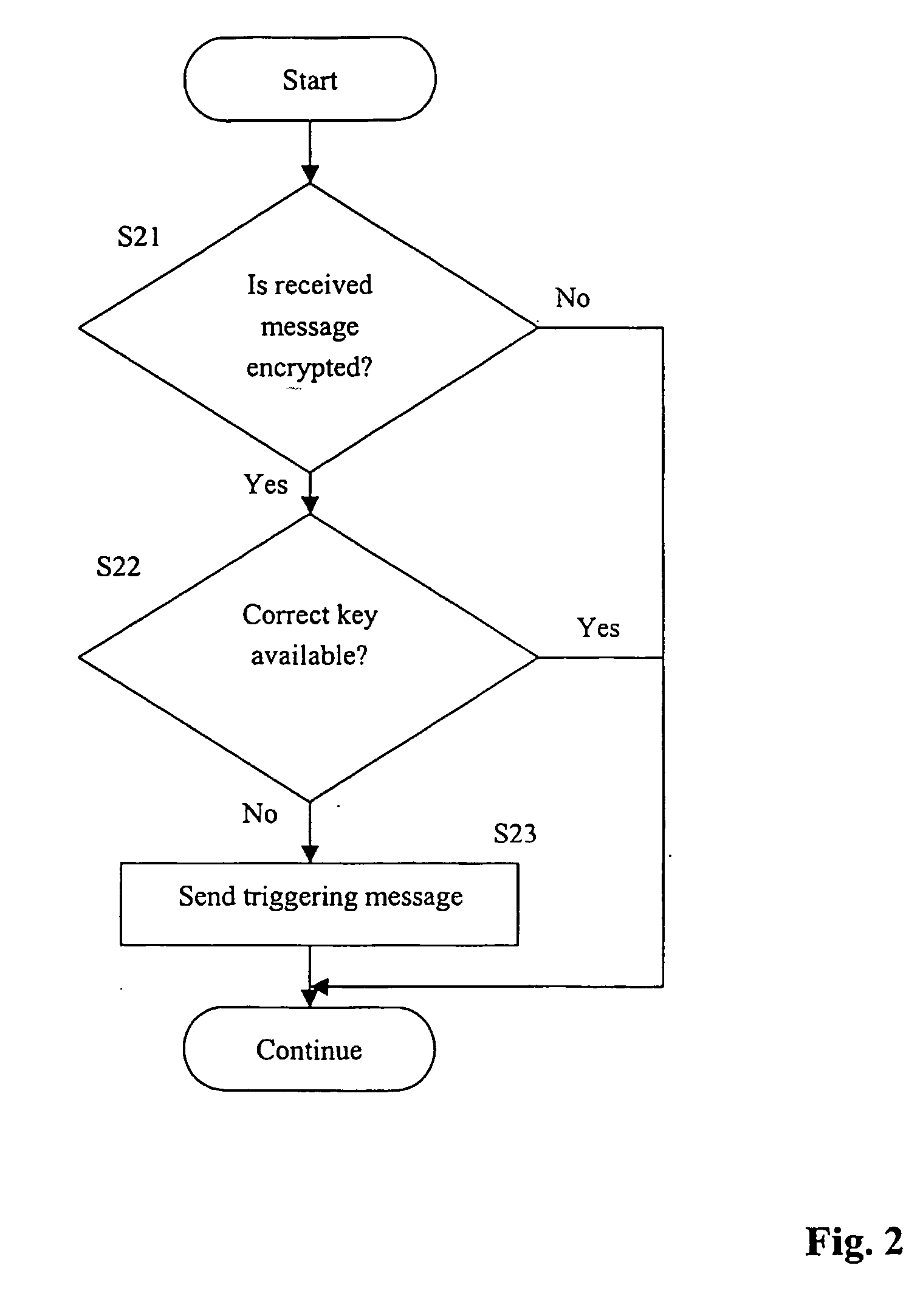Method of controlling a network entity and a mobile station
a network entity and mobile station technology, applied in the field of network entity control and mobile station, can solve the problem of evidently incorrect use of keys, and achieve the effect of avoiding the loss of time for performing encryption key generation procedures in the network entity and the mobile station
- Summary
- Abstract
- Description
- Claims
- Application Information
AI Technical Summary
Benefits of technology
Problems solved by technology
Method used
Image
Examples
Embodiment Construction
[0035]FIG. 1 shows a schematic block diagram of a mobile station 1 arranged to operate according to the present invention. FIG. 1 shows an antenna 11, a transmitting and receiving part 12, and a signal processing section 13. The signal processing section 13 comprises a processor 132 and a memory 131. The processor 132 is indicated as comprising an encryption key generator 1321, a message encryptor / decryptor 1322 and a controller 1323 for controlling the operation of the mobile station. It may be noted that the mobile station will generally contain further conventional features, such as a microphone, loudspeaker, display, keyboard and other well known elements, which are not shown, as they have no relevance for the present description.
[0036] The encryption key generator 1321, message encryptor / decryptor 1322 and controller 1323 are shown as being software components executed by the processor 132. However, it may be noted that they could also be provided as separate hardware componen...
PUM
 Login to View More
Login to View More Abstract
Description
Claims
Application Information
 Login to View More
Login to View More - R&D
- Intellectual Property
- Life Sciences
- Materials
- Tech Scout
- Unparalleled Data Quality
- Higher Quality Content
- 60% Fewer Hallucinations
Browse by: Latest US Patents, China's latest patents, Technical Efficacy Thesaurus, Application Domain, Technology Topic, Popular Technical Reports.
© 2025 PatSnap. All rights reserved.Legal|Privacy policy|Modern Slavery Act Transparency Statement|Sitemap|About US| Contact US: help@patsnap.com



